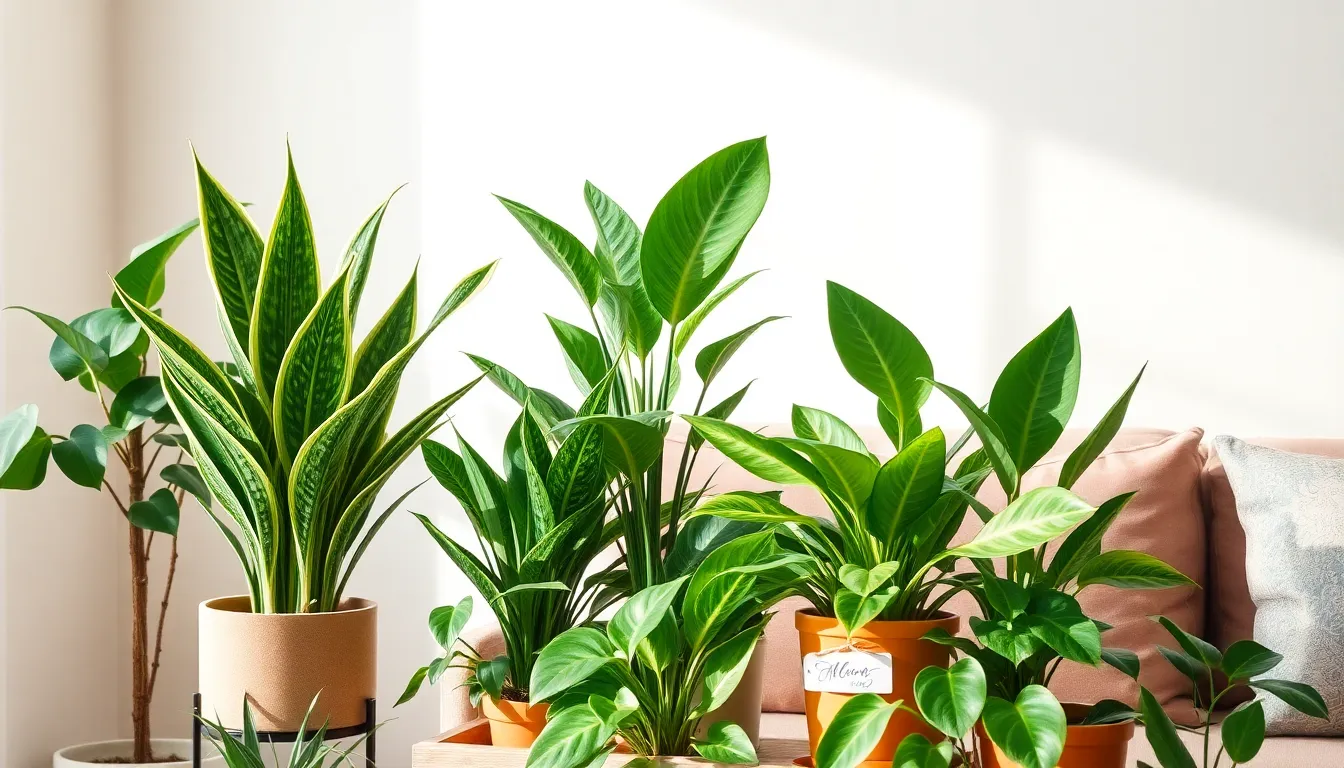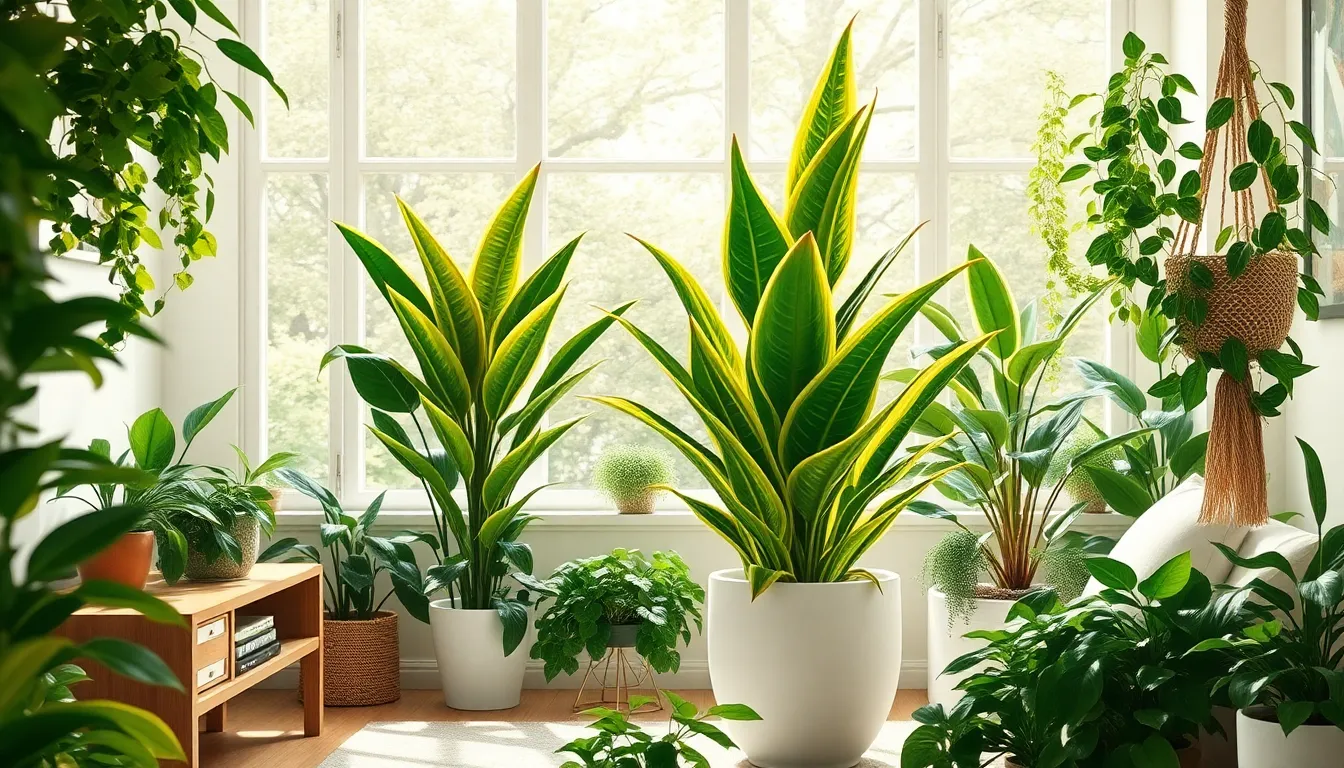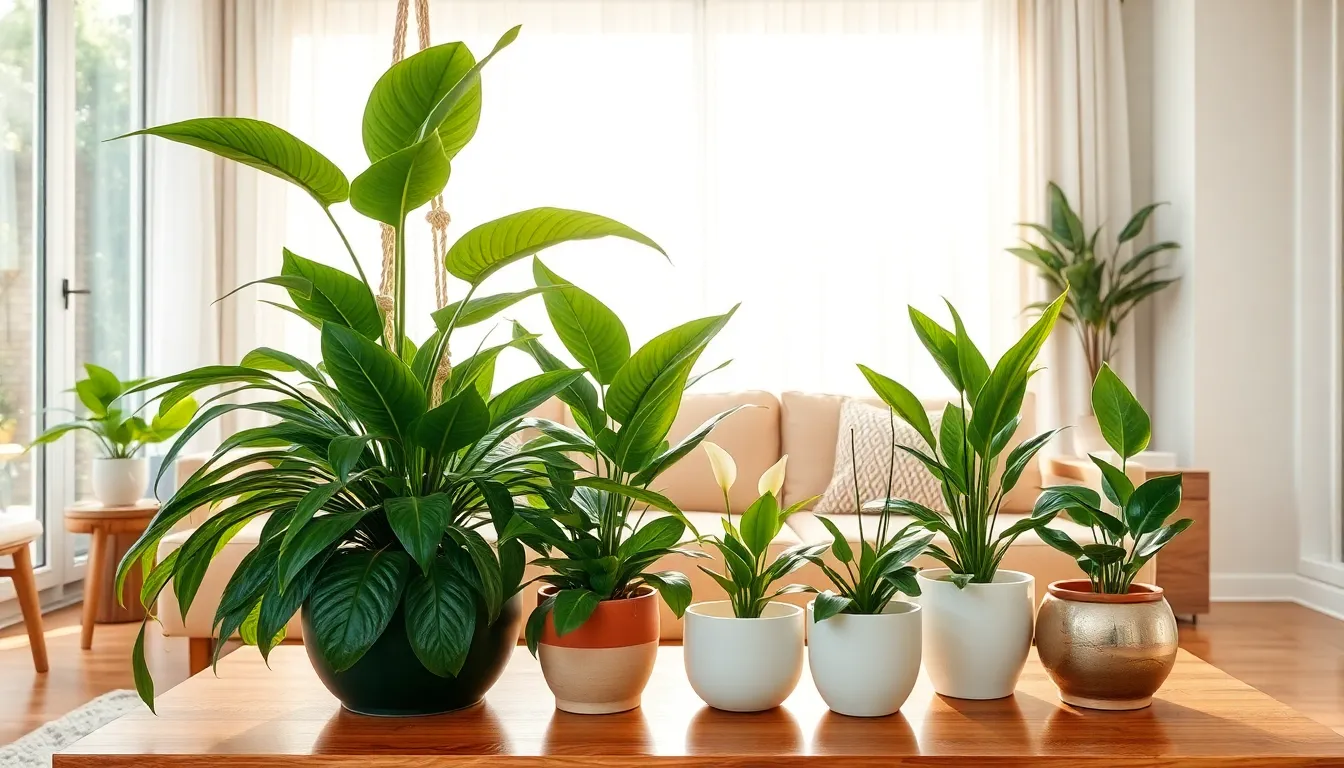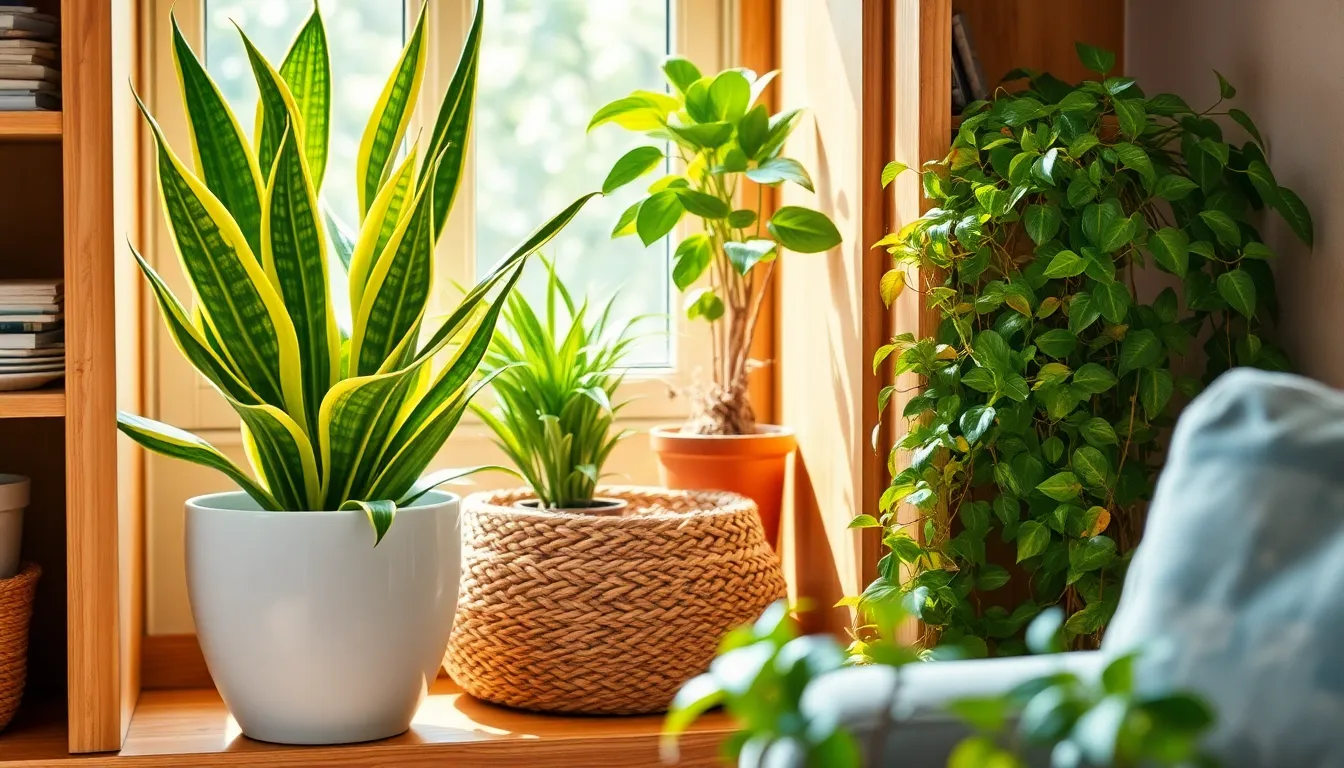Welcome to the verdant world of indoor gardening, where the joys of nurturing life can flourish even within the confines of your home. Whether you’re just beginning to explore the magic of plants or have a seasoned green thumb, our guide to the “Top 10 Indoor Plants for Low Maintenance” promises to be your trusty companion in cultivating a lush indoor oasis without the fuss.
Diving into this list will reveal a selection of resilient plants that thrive with minimal care, offering a perfect blend of beauty and practicality. Imagine the satisfaction of effortlessly vibrant greenery that purifies your air, lifts your spirits, and transforms your living space into a serene sanctuary.
Let this guide inspire confidence and excitement as you discover the ease of growing these hardy companions, expertly curated to suit busy lives and varying levels of gardening expertise. With our practical tips and insights, you’ll soon experience the rewarding connection and tranquility that only successful gardening can bring.
Spider Plant (Chlorophytum comosum)
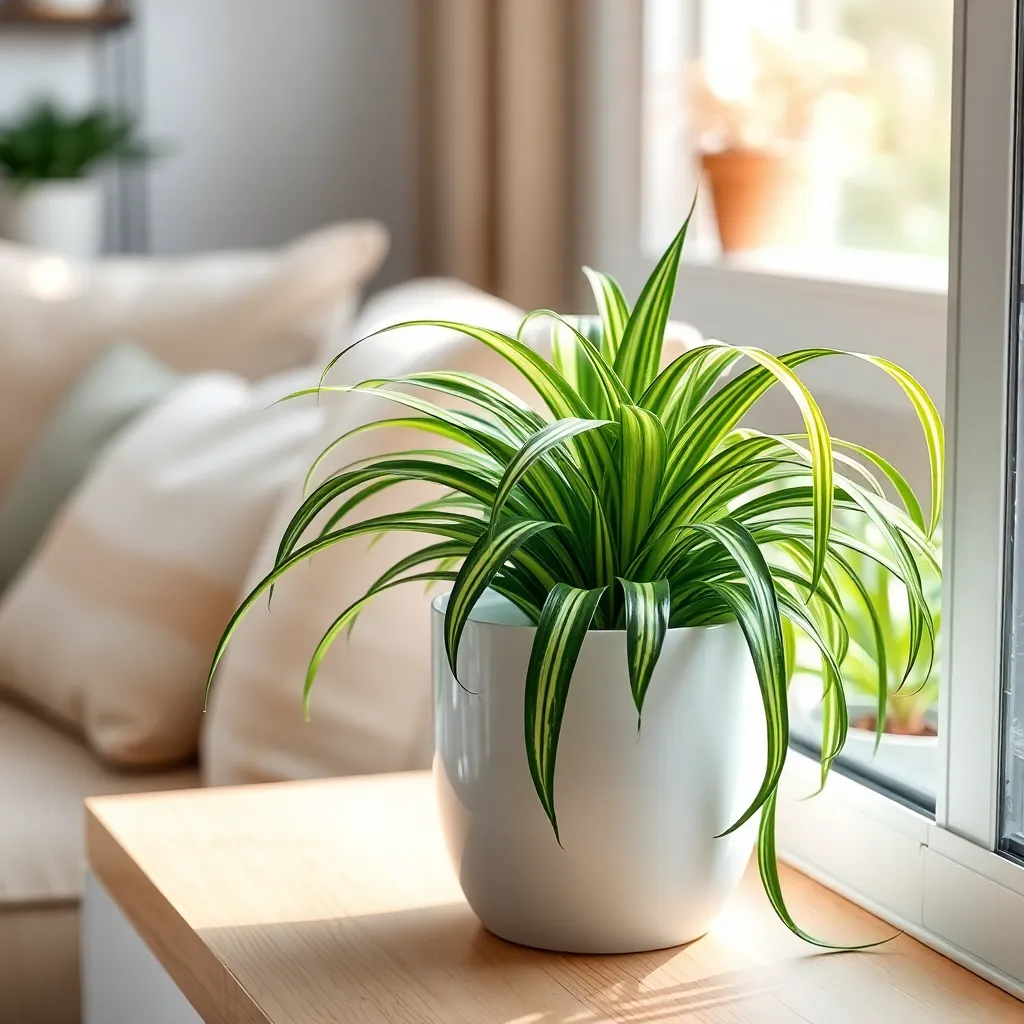
The Spider Plant (Chlorophytum comosum) is an ideal choice for those seeking a low-maintenance houseplant. Known for its air-purifying qualities, this plant thrives in various indoor environments, making it perfect for both beginners and seasoned gardeners.
To ensure your Spider Plant flourishes, place it in a location with bright, indirect light. Direct sunlight can scorch its leaves, so a spot near a north-facing window is often ideal.
Water your Spider Plant moderately, allowing the top inch of soil to dry out between waterings. Overwatering is a common mistake, so ensure your pot has good drainage to prevent root rot.
For optimal growth, use a well-draining potting mix, such as one containing peat, perlite, and vermiculite. Spider Plants are adaptable but prefer slightly acidic to neutral soil pH.
Advanced gardeners can propagate Spider Plants easily by planting the small plantlets, or “spiderettes,” that develop from the parent plant. Simply place these spiderettes in water until roots form, then transfer them to a pot with soil.
Regularly removing any brown tips from the leaves will keep your Spider Plant looking vibrant and healthy. Additionally, feeding your plant with a balanced houseplant fertilizer every 4-6 weeks during the growing season will support robust growth.
Peace Lily (Spathiphyllum spp.)
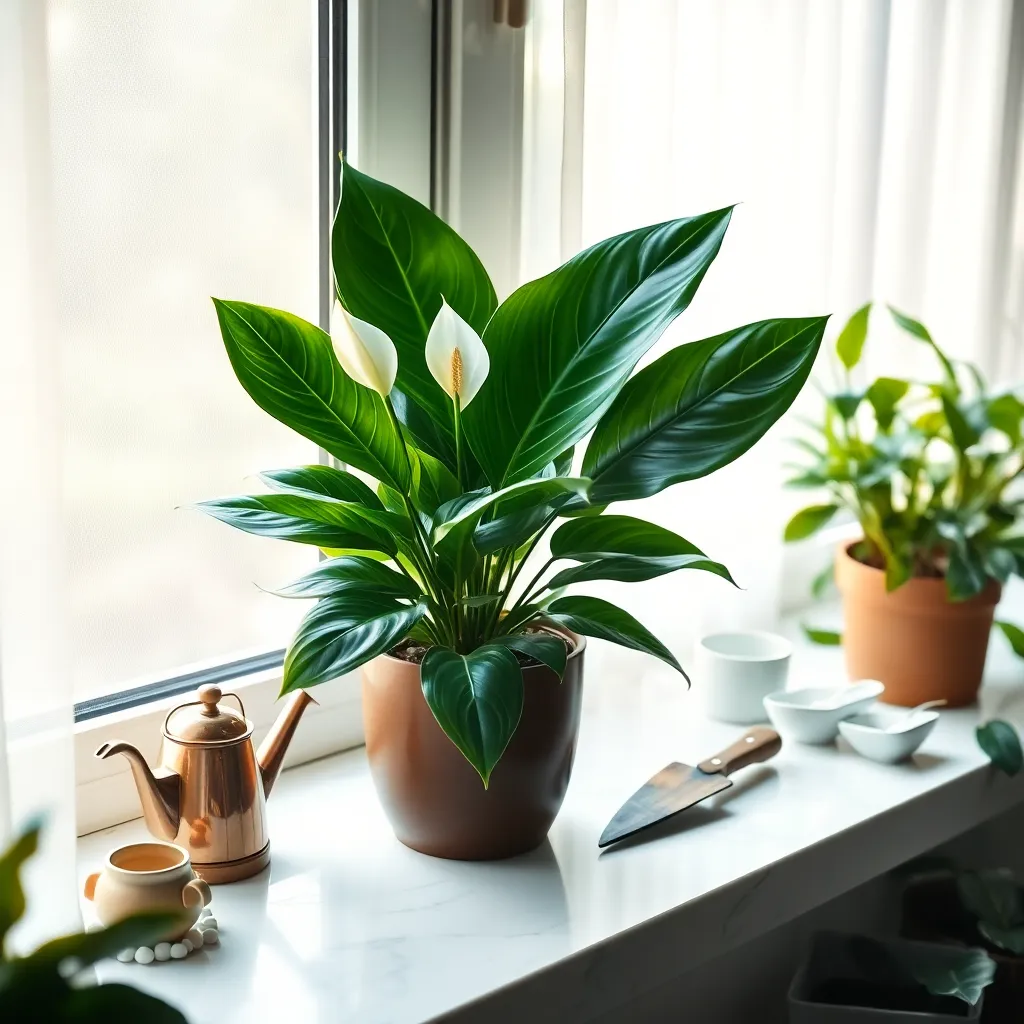
The Peace Lily (Spathiphyllum spp.) is a favorite among indoor plant enthusiasts for its elegant white blooms and low-maintenance nature. Known for thriving in lower light conditions, it makes an excellent choice for offices or rooms with limited sunlight.
When it comes to watering, Peace Lilies prefer to be slightly dry between waterings. Allow the top inch of soil to dry out before thoroughly watering, which helps prevent overwatering—a common issue with this plant.
For optimal growth, place your Peace Lily in well-draining soil, such as a peat-based potting mix, which retains moisture without becoming waterlogged. It’s also beneficial to fertilize the plant monthly during the growing season with a balanced, water-soluble fertilizer to encourage lush foliage and more blooms.
Advanced care involves periodically wiping the leaves with a damp cloth to keep them dust-free, enhancing the plant’s ability to photosynthesize. If you notice the leaves drooping, it’s a sign that the plant needs water, which makes the Peace Lily an excellent communicator of its needs.
Aloe Vera (Aloe barbadensis miller)
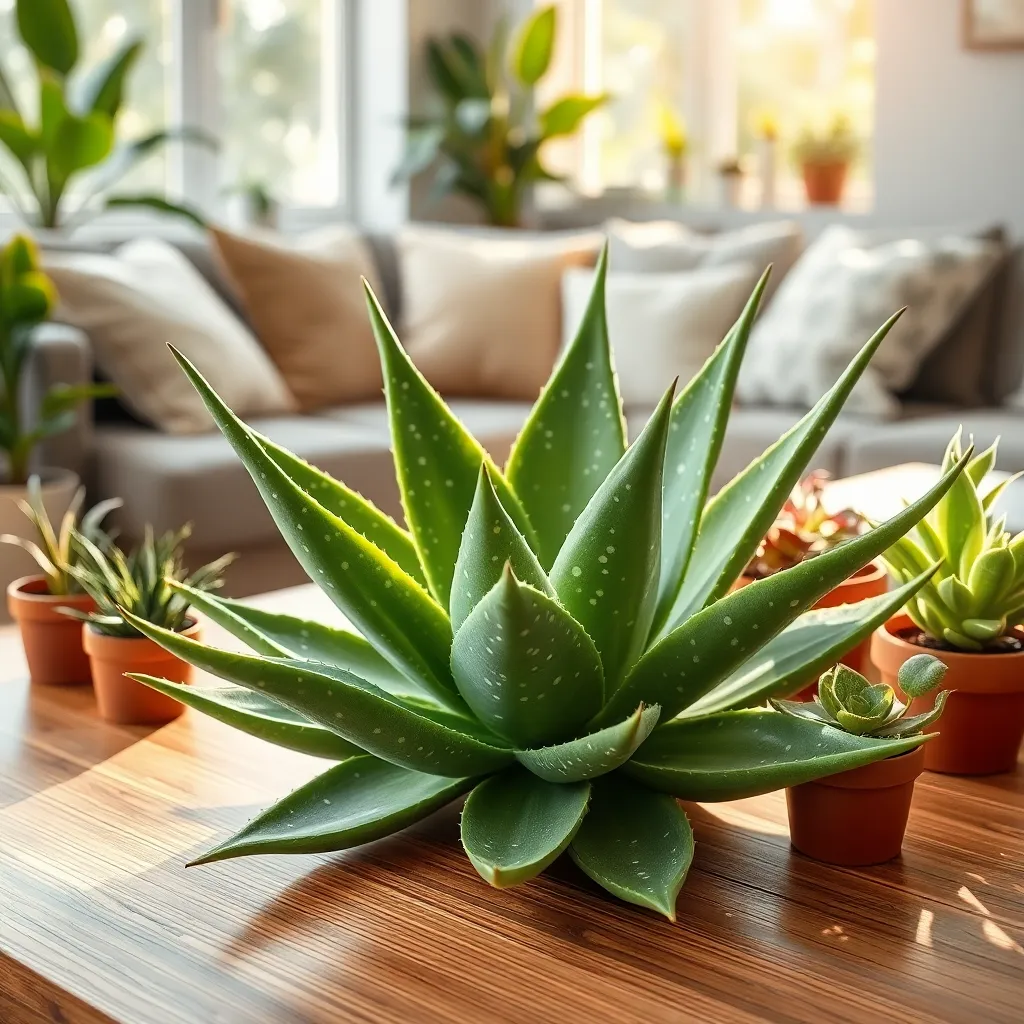
Aloe Vera, known scientifically as Aloe barbadensis miller, is a superb choice for those looking for a hardy, low-maintenance indoor plant. This succulent is renowned for its medicinal properties and ability to thrive with minimal attention.
Place your Aloe Vera in a location where it will receive bright, indirect sunlight. Direct sunlight can scorch the leaves, so an east or west-facing window is ideal for maintaining its healthy appearance.
When it comes to watering, Aloe Vera is quite forgiving and prefers to be on the dry side. Allow the top inch of soil to dry out completely between waterings to prevent root rot, which is a common issue with overwatering.
A well-draining potting mix, such as a cactus or succulent mix, is essential to support the plant’s root health. If you’re an advanced gardener, consider adding perlite or sand to improve drainage further.
Fertilizing Aloe Vera is not a frequent requirement, but you can boost its growth by applying a diluted, balanced liquid fertilizer once every spring. This minimal feeding routine will help your plant thrive without overwhelming it with nutrients.
Chinese Evergreen (Aglaonema commutatum)
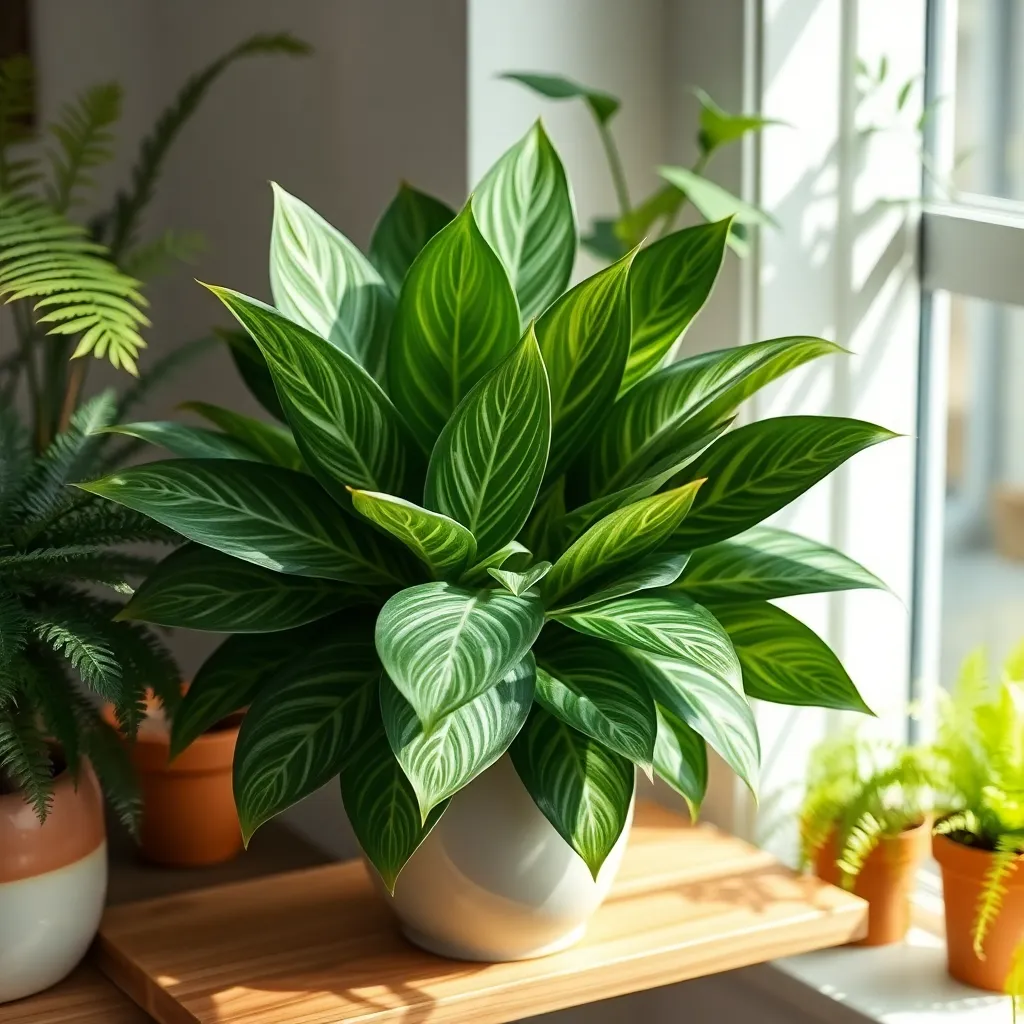
Chinese Evergreen (Aglaonema commutatum) is a highly adaptable houseplant, perfect for both beginners and seasoned gardeners. Known for its ability to thrive in low-light conditions, this plant is ideal for home and office environments where sunlight is limited.
Watering needs are minimal, with the plant preferring to dry out slightly between waterings. To ensure optimal growth, water the plant thoroughly when the top inch of soil feels dry, but avoid waterlogging the roots.
For the best results, use a well-draining potting mix, such as one containing peat and perlite. This combination helps maintain the right moisture balance, preventing root rot while providing adequate aeration.
While Chinese Evergreen is tolerant of various light conditions, placing it in indirect sunlight will enhance its foliage color. For those looking to boost its growth, consider adding a diluted liquid fertilizer once a month during the growing season.
Advanced gardeners might consider propagating this plant through stem cuttings or division. These methods not only expand your collection but also rejuvenate older plants, keeping them vibrant and healthy.
Jade Plant (Crassula ovata)
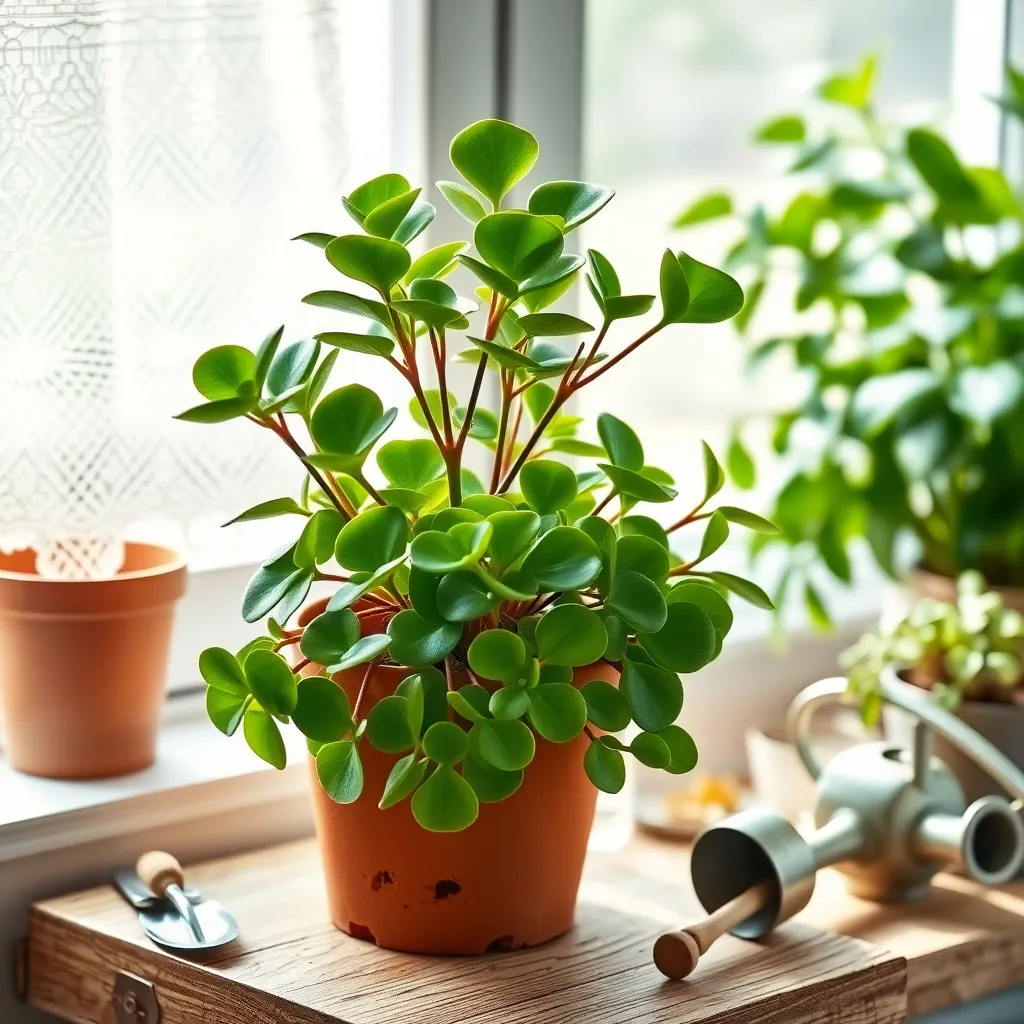
The Jade Plant (Crassula ovata) is a perfect choice for those looking for a low-maintenance yet visually appealing indoor plant. Known for its thick, fleshy leaves and tree-like appearance, it can add a touch of greenery to your home with minimal effort.
One of the key aspects of caring for a Jade Plant is managing its watering needs. It’s important to allow the soil to dry out completely between waterings, as overwatering can lead to root rot—a common issue with succulents.
Ensure your Jade Plant receives plenty of bright, indirect sunlight for healthy growth. If natural light is limited, consider placing it near a south-facing window or using a grow light to supplement its needs.
For optimal growth, use a well-draining potting mix, ideally a cactus or succulent blend. This type of soil helps prevent water retention and supports the plant’s need for dry conditions.
Advanced gardeners might consider pruning to shape the Jade Plant and encourage branching. Regularly removing dead or damaged leaves can also promote healthier growth and a more attractive appearance.
Rubber Plant (Ficus elastica)
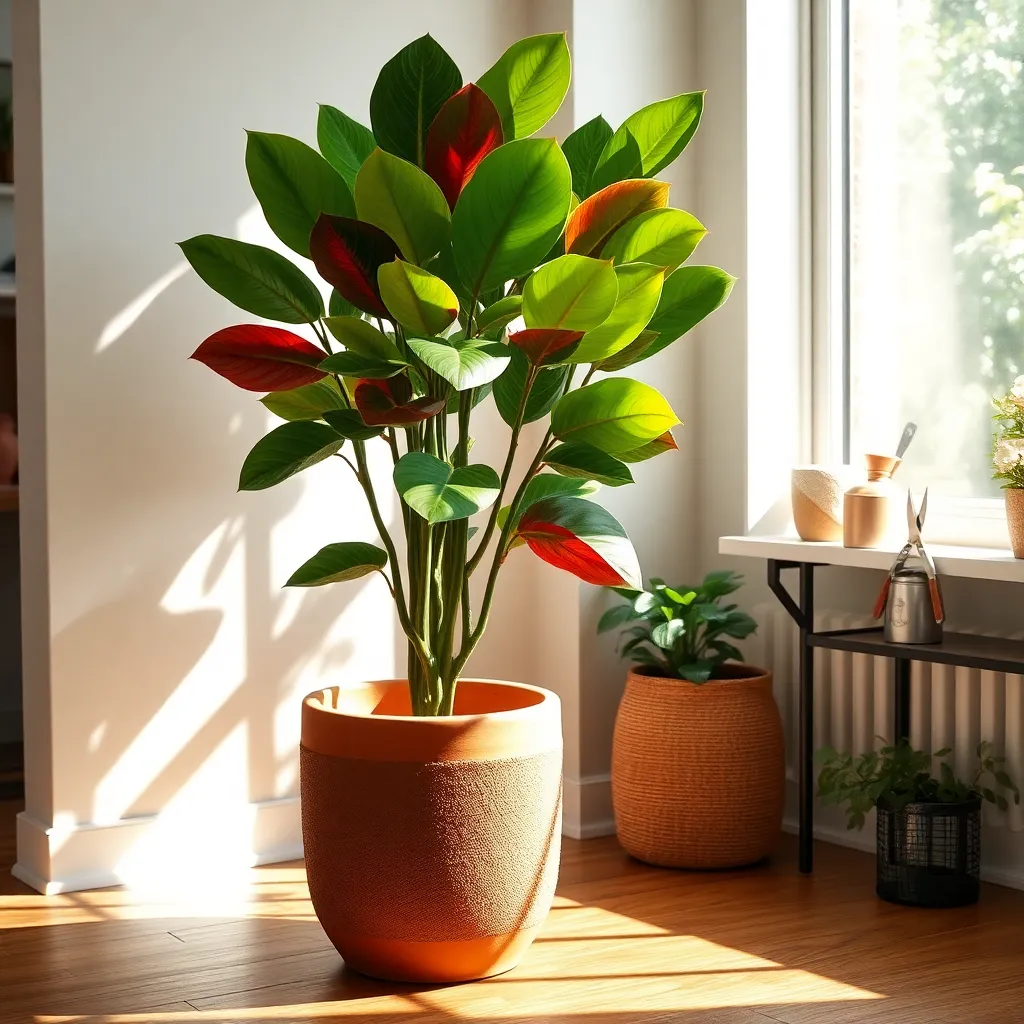
The Rubber Plant (Ficus elastica) is a fantastic choice for those looking for a low-maintenance indoor plant that can thrive in various conditions. Known for its large, glossy leaves, this plant adds a touch of elegance to any indoor space while purifying the air.
To care for your Rubber Plant, place it in a spot with bright, indirect light. While it can tolerate lower light conditions, optimal growth occurs with enough light, helping to maintain the vibrant color of its leaves.
Water your Rubber Plant when the top inch of soil feels dry to the touch, usually every one to two weeks. Be cautious of overwatering, as this can lead to root rot; ensure your pot has good drainage.
For soil, use a well-draining potting mix, such as a peat-based formula mixed with some perlite or sand. Repotting every two to three years is recommended to give the roots room to grow and to refresh the soil.
Philodendron (Philodendron hederaceum)
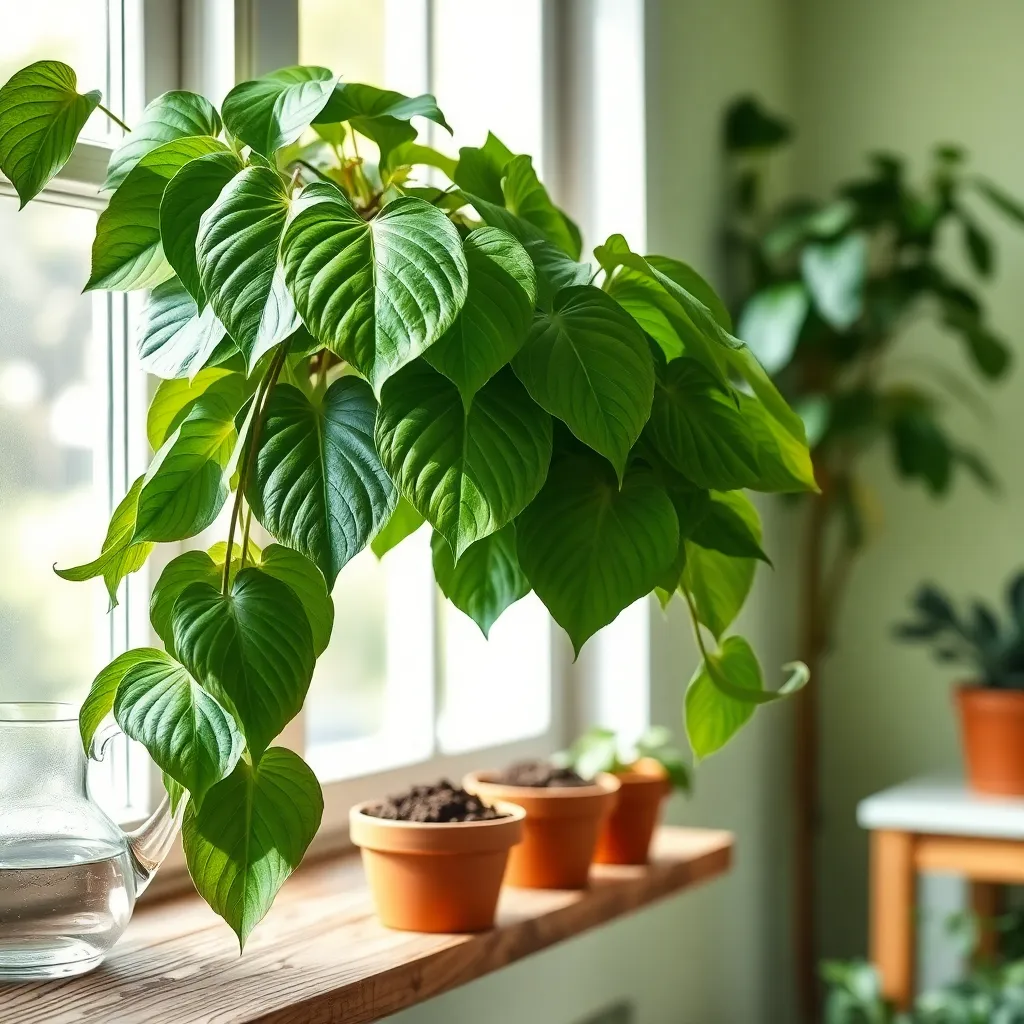
Philodendron hederaceum, commonly known as the Heartleaf Philodendron, is a favorite among gardeners for its lush, green foliage and ease of care. This plant thrives in a variety of indoor conditions, making it perfect for beginners who want a touch of greenery in their homes.
To keep your Philodendron healthy, place it in a spot with bright, indirect light. Although it can tolerate low light, optimal growth occurs when it receives ample indirect sunlight.
Water your Philodendron when the top inch of soil feels dry to the touch. Overwatering can lead to root rot, so ensure the pot has good drainage, and the soil is well-aerated.
For those looking to give their Philodendron an extra boost, fertilize it every 6-8 weeks during the growing season with a balanced, water-soluble fertilizer. Advanced gardeners can prune the plant occasionally to encourage bushier growth and propagate cuttings to expand their collection.
Cast Iron Plant (Aspidistra elatior)
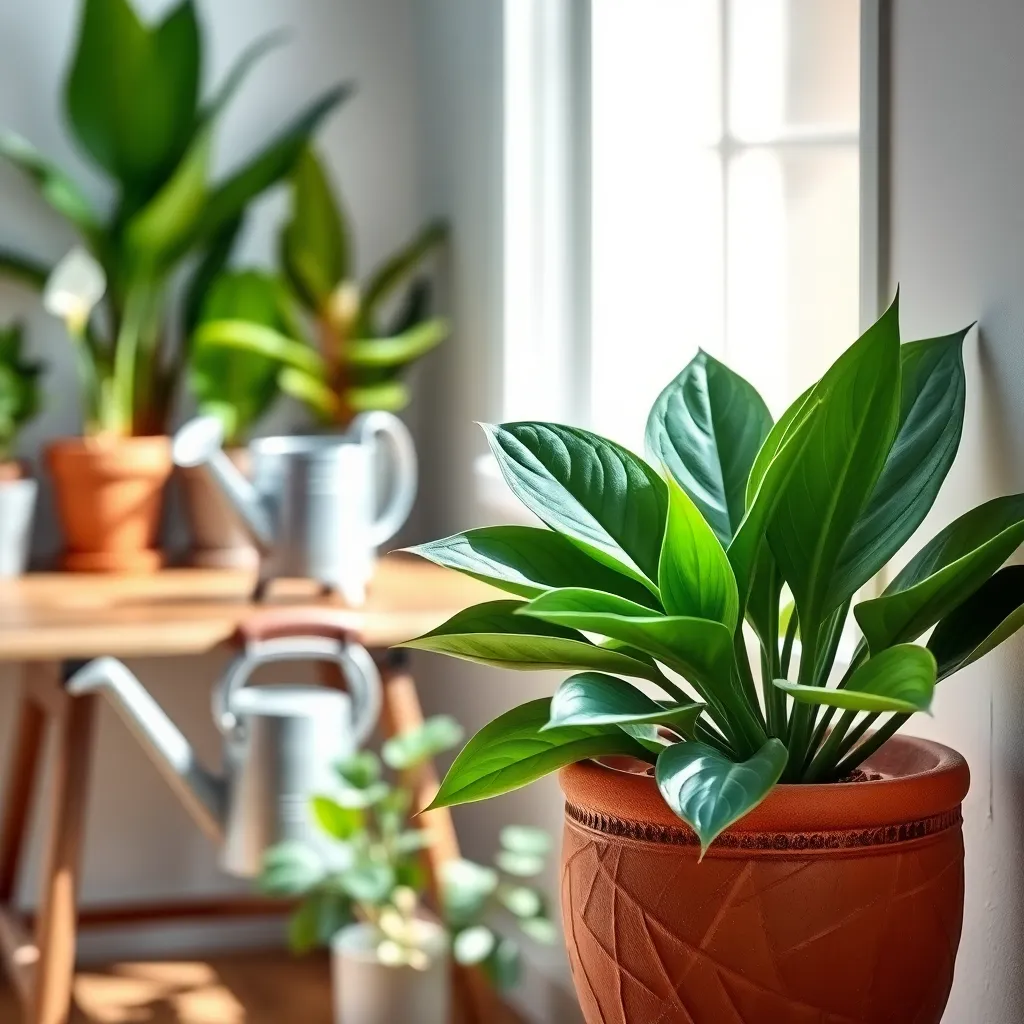
The Cast Iron Plant (Aspidistra elatior) is renowned for its ability to thrive in low-light conditions, making it perfect for dimly lit spaces. Its robust nature allows it to withstand neglect, making it an ideal choice for busy or forgetful gardeners.
Water the Cast Iron Plant sparingly, allowing the soil to dry out between waterings. Overwatering is one of the few ways to harm this resilient plant, so ensure your pot has adequate drainage.
When it comes to soil, opt for a well-draining potting mix, such as a combination of regular potting soil and perlite. This will help prevent the roots from sitting in water, which can lead to root rot.
Although it’s tolerant of less-than-ideal conditions, giving your Cast Iron Plant a bit of extra care will help it thrive. Consider fertilizing with a balanced liquid fertilizer every two to three months during the growing season to encourage lush growth.
Parlor Palm (Chamaedorea elegans)
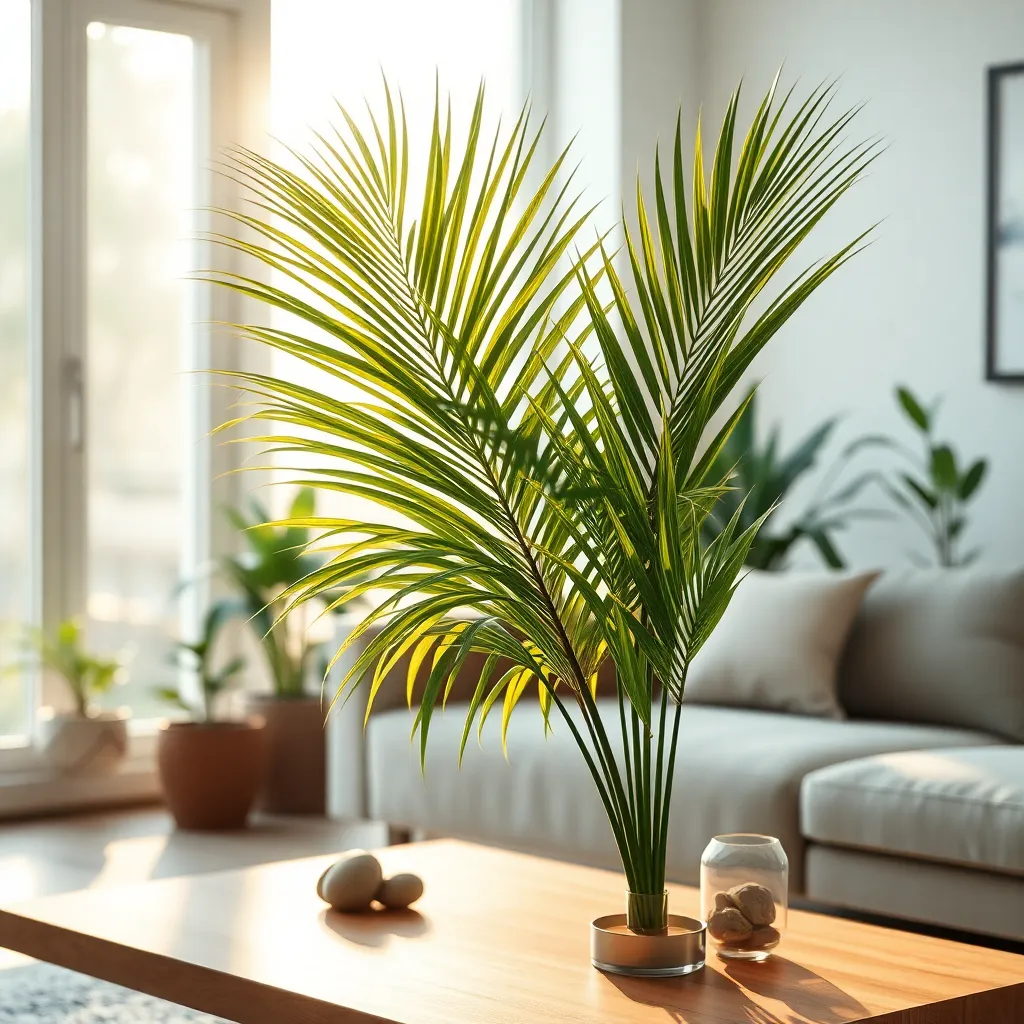
The Parlor Palm (Chamaedorea elegans) is a fantastic choice for those seeking a low-maintenance indoor plant. This versatile plant thrives in low light conditions, making it perfect for dim corners or offices with minimal natural light.
To help your Parlor Palm flourish, place it in well-draining potting soil. A standard indoor potting mix will suffice, but adding some perlite can improve aeration and drainage, ensuring your palm’s roots remain healthy.
Watering is straightforward; simply keep the soil slightly moist, allowing it to dry out between waterings. Overwatering can lead to root rot, so ensure the top inch of soil is dry before adding more water.
For more experienced gardeners, consider misting the leaves occasionally to increase humidity, mimicking the Parlor Palm’s natural habitat. Fertilize sparingly, using a balanced liquid fertilizer every two months during the growing season to maintain lush, green foliage.
Boston Fern (Nephrolepis exaltata)
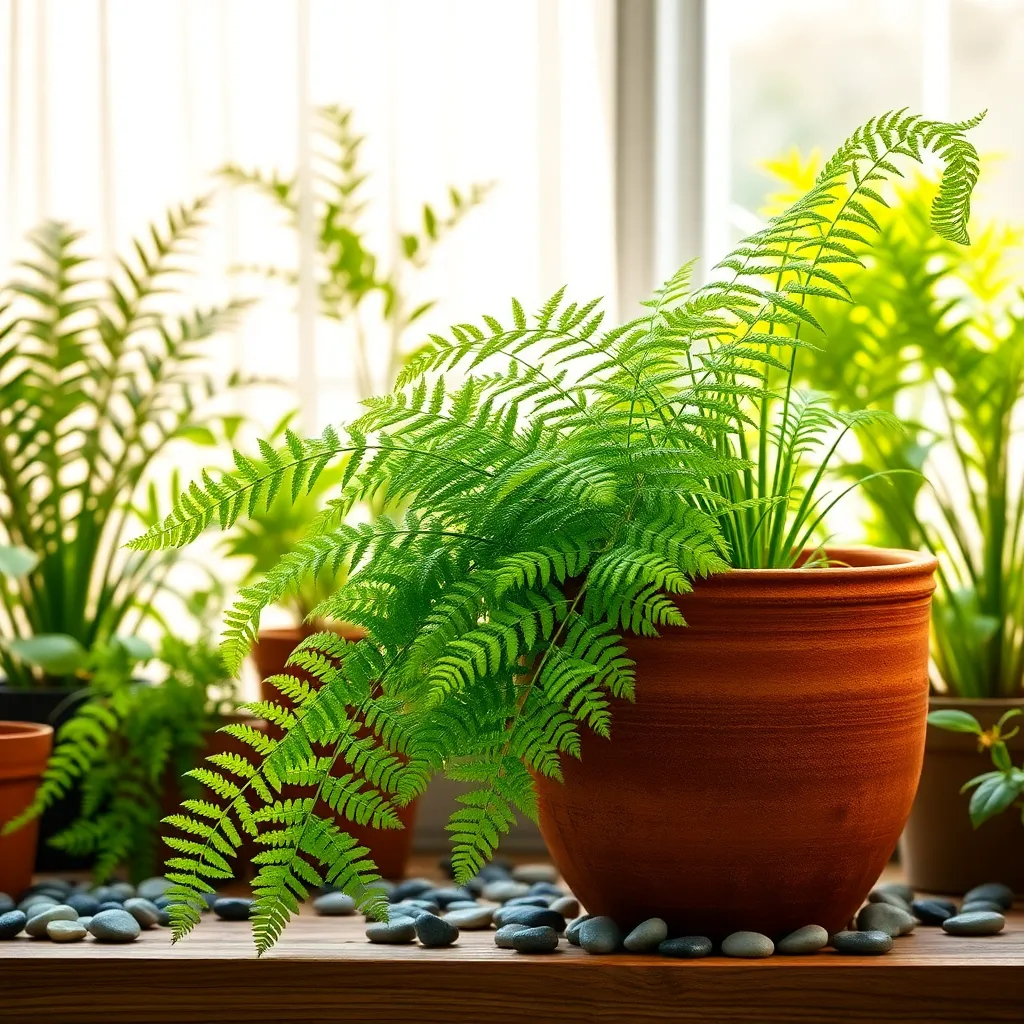
Known for its lush, feathery fronds, the Boston Fern (Nephrolepis exaltata) is an excellent choice for indoor gardeners seeking low-maintenance greenery. This plant thrives in indirect light, making it perfect for brightening up a room without needing direct sunlight.
Keeping the soil consistently moist is key to a happy Boston Fern. Water it once a week, ensuring the top inch of soil is dry before watering again to prevent root rot.
To maintain humidity, which the Boston Fern loves, mist the leaves regularly or place a tray of water near the plant. For an advanced tip, consider using a humidifier during drier months to keep the fronds lush and vibrant.
For best results, plant your Boston Fern in a well-draining potting mix rich in organic matter. A mix containing peat moss and perlite works well, ensuring proper aeration and moisture retention.
Conclusion: Growing Success with These Plants
As we explored the ‘Top 10 Indoor Plants for Low Maintenance,’ we also uncovered essential relationship concepts that can nurture the bonds we share with others. Just like the resilient Snake Plant teaches us about thriving despite neglect, relationships flourish with attention and care. The forgiving ZZ Plant represents patience, while the adaptable Pothos reminds us of the importance of flexibility. The humble Spider Plant speaks to the power of giving and receiving support, and the soothing Peace Lily highlights the need for harmony. The vibrant Chinese Evergreen inspires us to embrace diversity, while the hardy Rubber Plant underscores the strength of resilience. The calming Aloe Vera encourages healing, the cheerful Philodendron brings joy, and the minimalistic Cast Iron Plant emphasizes enduring simplicity.
Your next step is to choose one of these inspiring plants for your home, symbolizing your commitment to nurturing your relationships. Save or bookmark this article to revisit these concepts whenever you need a reminder of these valuable lessons. Remember, cultivating thriving relationships is a journey, and with these insights, you’re well-equipped for success. Embrace the journey with confidence, knowing that with each small action, you’re nurturing bonds that will flourish for years to come.

